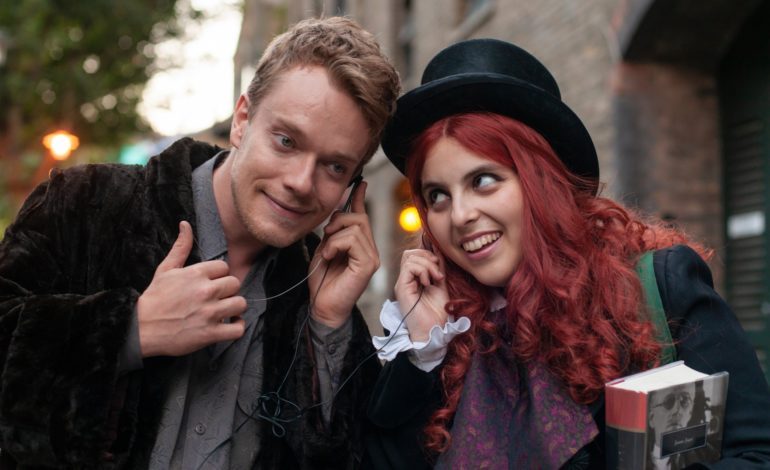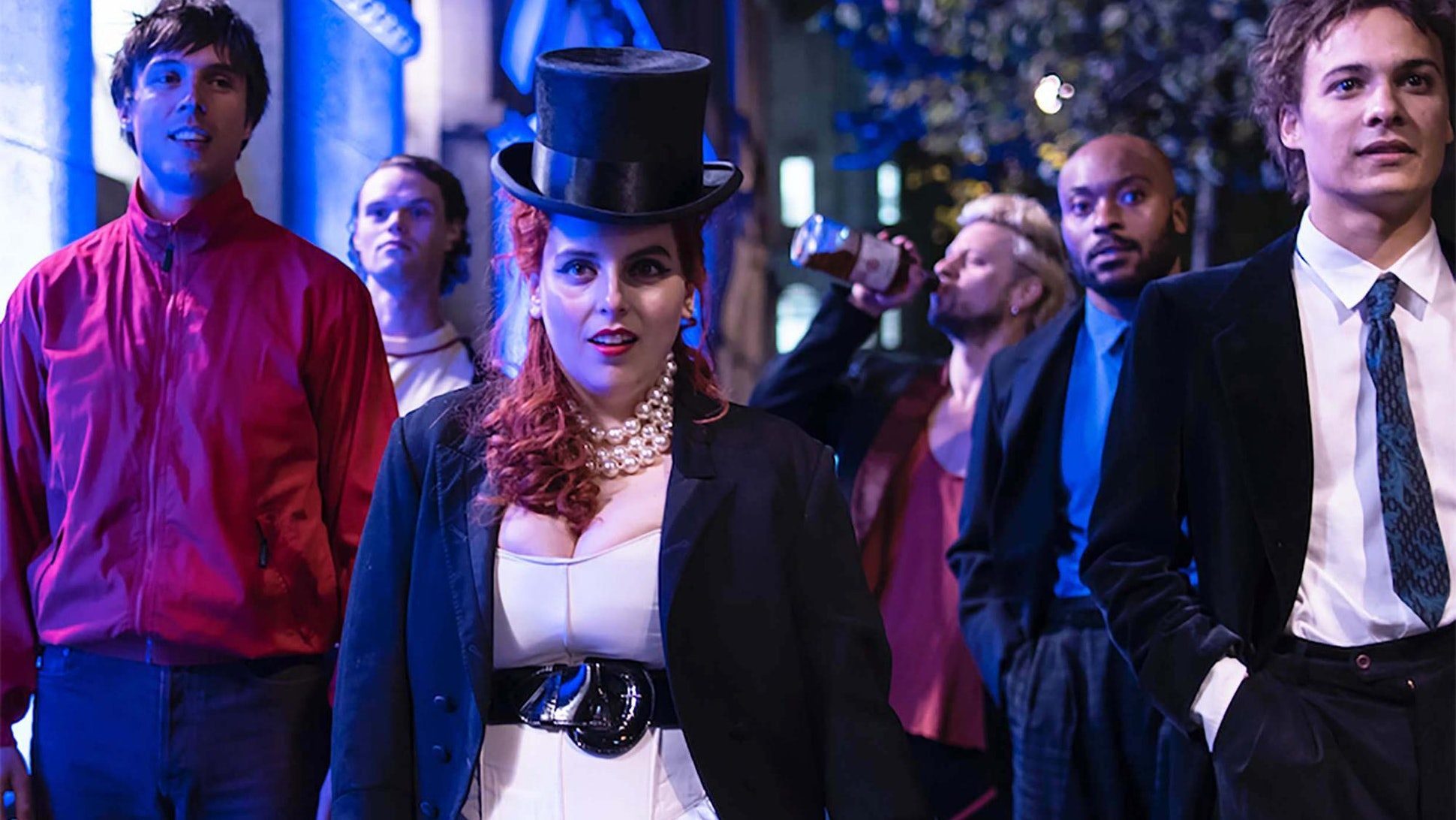

How to Build a Girl feels deeply familiar, probably because it ticks so many boxes on the indie comedy checklist. These include humble beginnings in a working class town, dreams of a life that seem just out of reach, and an inspirational- if nog implausible- success story for starters, to say nothing of the sad indie ballad soundtrack and an incredibly brief cameo from an Academy Award winner to help nudge it slightly up the sales charts. In the last case, it’s the fantastically talented and underutilized Emma Thompson, who literally shows up for the last five minutes.
What makes the film stand apart from an endless series of coming of age films is its star, Beanie Feldstein, who delivers an endearingly earnest performance as Johanna Morrigan, a sixteen year old girl who dreams of a better life. Johanna is an intelligent, young overachiever who makes up for her lack of friends by living in a fantasy world populated by talking photographs of her literary heroes and an army of flirtatious boys stepped straight out of a soda commercial. However, as she quickly observes, her story doesn’t begin with a boy. It begins – and ends – with herself.


An aspiring poet, Johanna is selected as a finalist in a competition for young poets. She heads from her drab life in Wolverhampton to read her poem on live television, only to have a complete meltdown that sends her home in disgrace, deepening her own humiliation at school, and taking her family down with her. Her confidence destroyed, Johanna sinks into a deep depression, fantasizing with Sylvia Plath about a dramatic suicide while she quite literally hides under her bed and eats jam.
Life goes from bad to worse when her brother convinces her to apply for a job as a “hot young gunslinger” at a music magazine so pretentious it would make the folks at Pitchfork feel unworthy. She is granted an interview, but is further humiliated when they tell her that they only gave it to her as part of a bet to see if the girl who submitted a music review of the Annie soundtrack was real. Dejected at first, Johanna has a rare moment of clarity and marches back into the office, demanding that the magazine give her a chance. They ultimately do for the same reason so many writers land their first jobs: because another writer was too lazy to do it.
Johanna isn’t just looking for a job, she is looking for an identity. Eager to please her new coworkers, she treats herself to a quick makeover montage that produces her new alter ego, Dolly Wilde. Dolly is everything Johanna aspires to be: cool, confident, and stylish. Most importantly, Dolly gives Johanna license to live out every fantasy she’s ever had. She travels the world, weasels her way into the cool room at school by handing out free promotional swag, and even begins indulging her voracious sexual appetite.
Of course, becoming a new person isn’t as simple as dying your hair and hopping on a plane, which forces Johanna to continue reinventing herself. Pushed between passion and profile, Dolly evolves from a fawning fangirl writing glorified mash notes to self-proclaimed bitch, eviscerating every musician who ever dared set foot on a stage. As Johanna descends further and further into her Dolly persona, she begins to lose herself and drive wedges between her family, to the point that she humiliates her own father, a once aspiring musician with so little self-awareness that he gave a demo tape to his daughter under the stage name Mayonnaise. While he may not entirely deserve his daughter’s scorn, you have to admit, he was kind of asking for it.


How to Build a Girl’s arc can feel very predictable: the unreasonably meteoric rise, the inevitable fall from grace, and the implausible friendship Dolly develops with rock star John Kite, played by former Game of Thrones star Alfie Allen. What keeps the film grounded is that Johanna never stops struggling. A typical teenager at her core, Johanna is haunted by depression and self-doubt so powerful that even Dolly can’t just laugh them off. Her rise to the top is like a bipolar swing, with every ecstatic success followed quickly by another failure and humiliation. As the highs get higher, the lows get lower, and Johanna is constantly forced to reinvent her way back to fleeting happiness.
The film’s central question is one of identity and self-worth: if you hate yourself, can you just will yourself to be someone else? And what happens when you grow to hate that person, too? At sixteen, everyone is trying to build an identity, but Johanna’s journey isn’t about how you build the girl that you want to be. It’s about how you keep building her, despite all the struggles and sadness, and come out better on the other side for not giving up.
Verdict: 4 out of 5 stars.
Despite an occasionally formulaic story, How to Build a Girl stands out amongst the coming of age genre due to a strong performance from its charismatic lead. The unflinching portrayal of teenage bullying and its impact keeps the film feeling dark, even when it strays dangerously close to outright career fantasies and fairytale endings.
